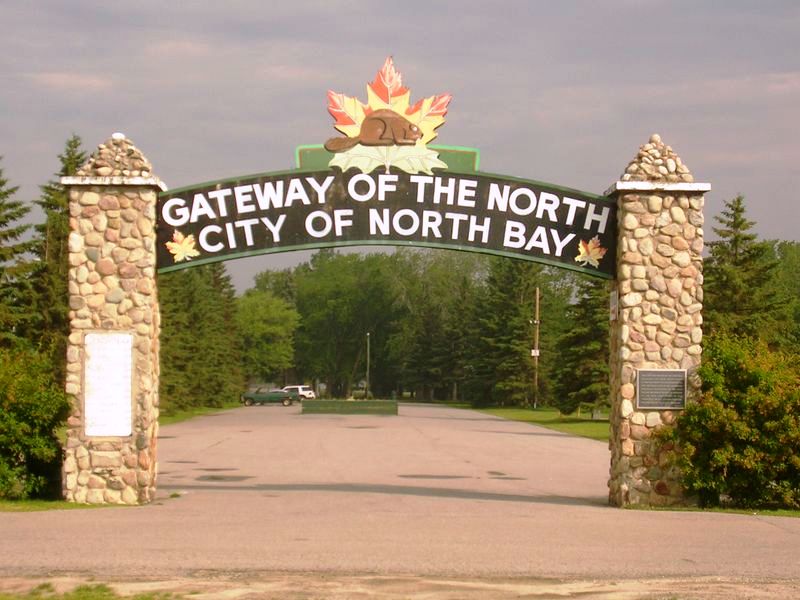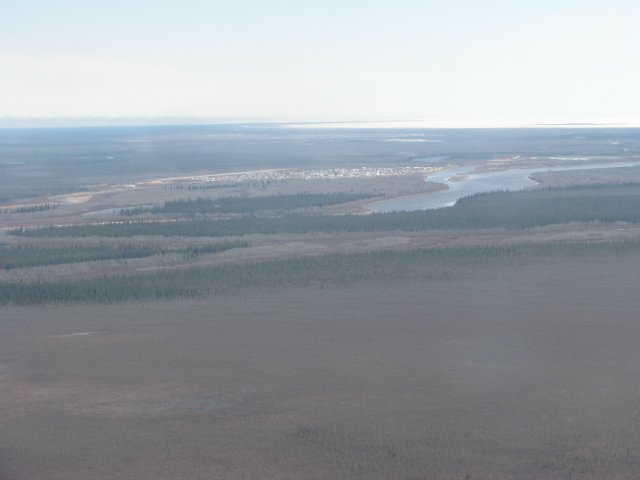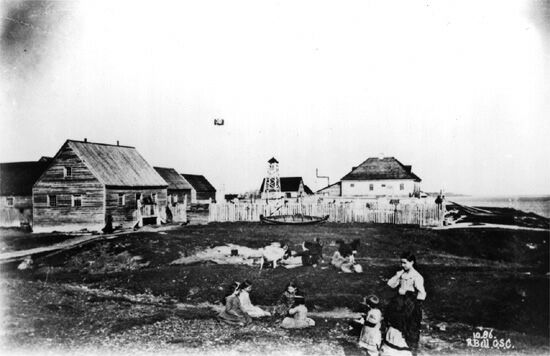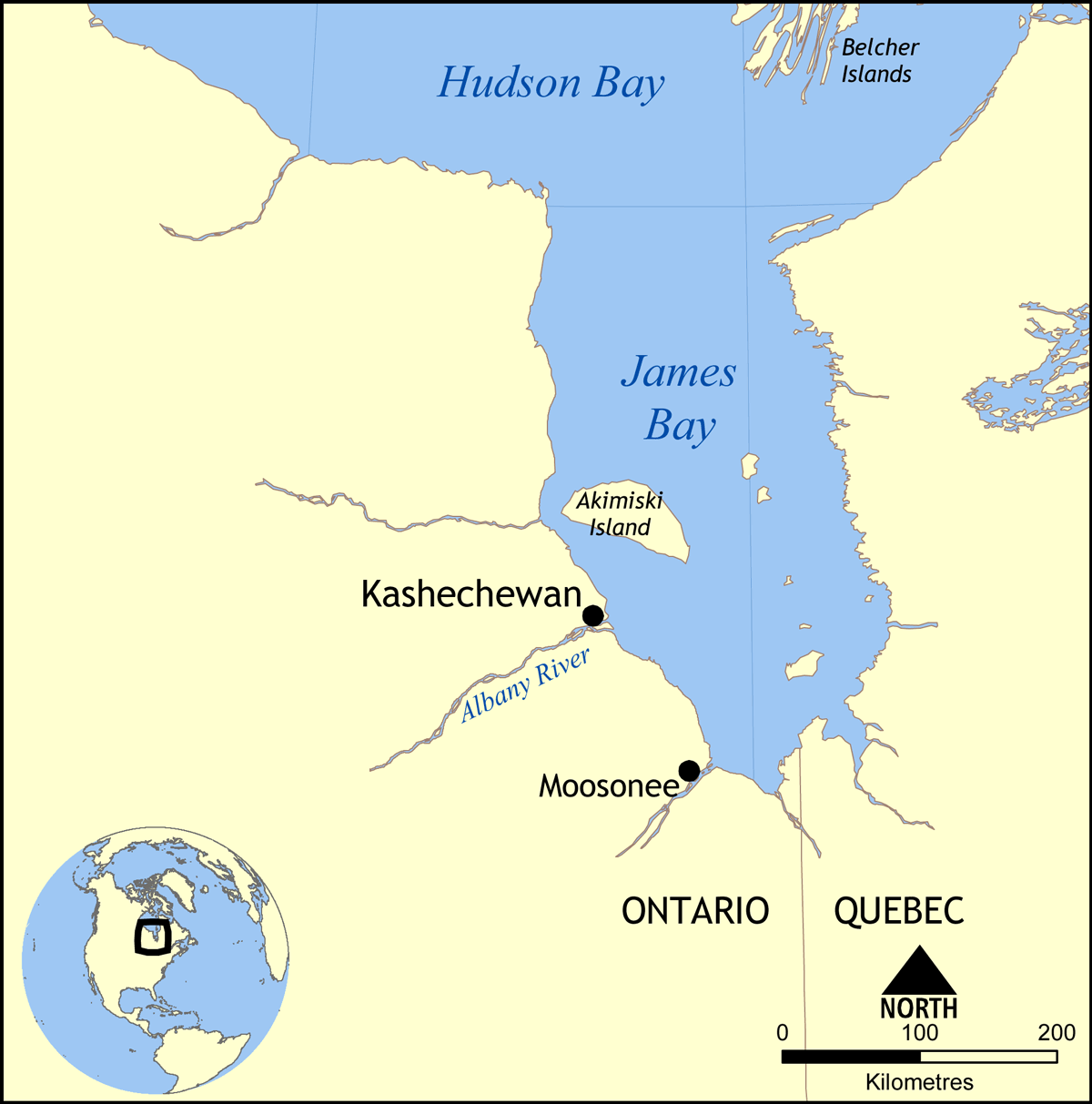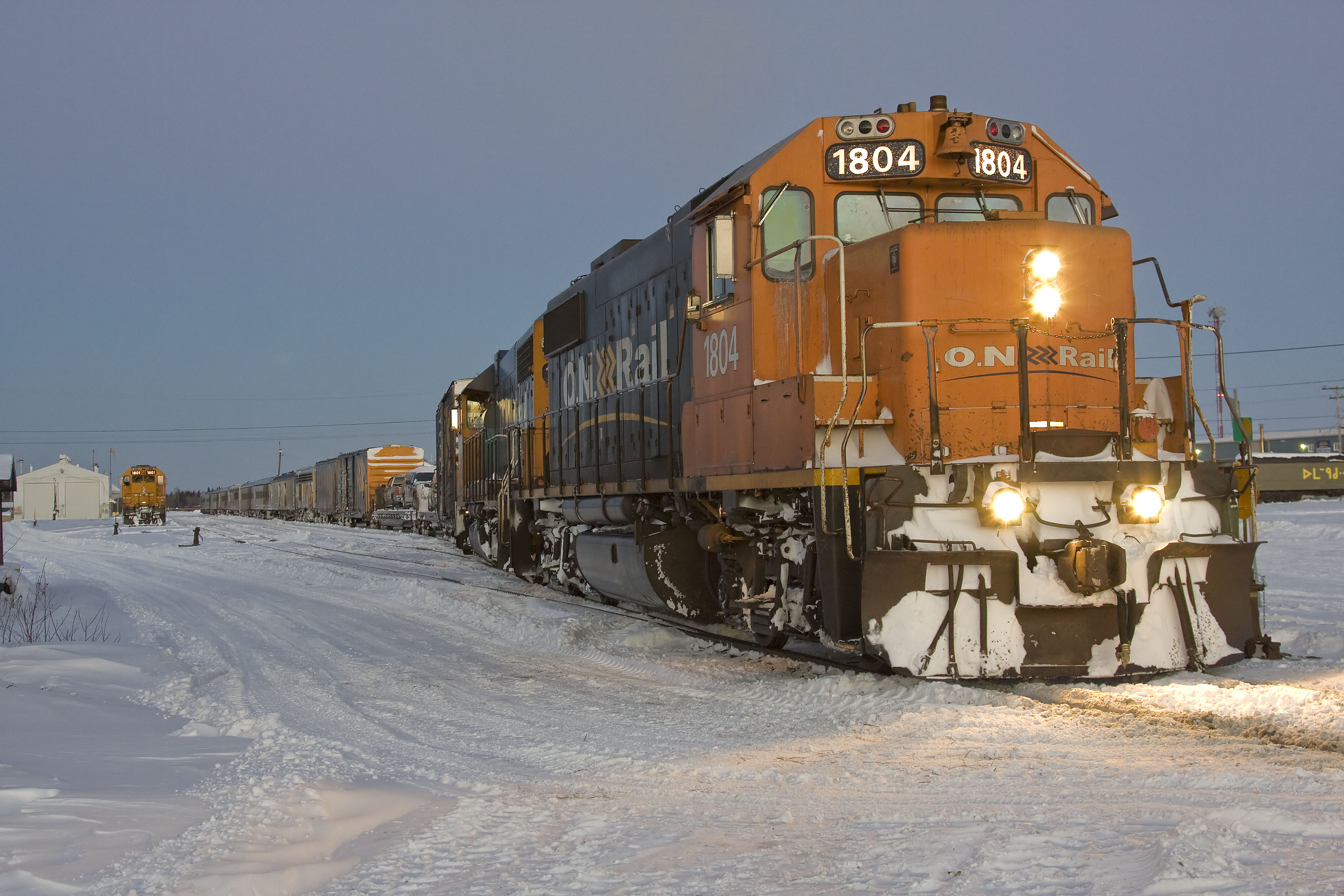|
Weeneebayko Area Health Authority Paramedic Services
Weeneebayko Area Health Authority Paramedic Services (WAHA-PS) - formerly James Bay Ambulance Services - services First Nation communities in Northern Ontario and is funded by the province of Ontario. WAHA-PS services the communities and transfers to the nearest airport/helipad for advance care in the south by ORNGE. Dispatch services are routed via Timmins Central Ambulance Communications Centre. Stations WAHA-PS operates from 6 stations: * Moosonee, Ontario - located at Fifth Street and Bay Road * Attawapiskat, Ontario - east of the hospital site * Fort Albany, Ontario - School Road and Main Road * Peawanuck, Ontario * Kashechewan, Ontario - at Base 4 * Moose Factory, Ontario - Emergency Preparedness and Response (EPR) Centre shared with Moose Factory Island Fire & Rescue and Nishnawbe Aski Police Service. Fleet WAHA-PS operates Type II ambulances An ambulance is a medically equipped vehicle which transports patients to treatment facilities, such as hospitals. T ... [...More Info...] [...Related Items...] OR: [Wikipedia] [Google] [Baidu] |
First Nations In Canada
First Nations (french: Premières Nations) is a term used to identify those Indigenous Canadian peoples who are neither Inuit nor Métis. Traditionally, First Nations in Canada were peoples who lived south of the tree line, and mainly south of the Arctic Circle. There are 634 recognized First Nations governments or bands across Canada. Roughly half are located in the provinces of Ontario and British Columbia. Under Charter jurisprudence, First Nations are a "designated group," along with women, visible minorities, and people with physical or mental disabilities. First Nations are not defined as a visible minority by the criteria of Statistics Canada. North American indigenous peoples have cultures spanning thousands of years. Some of their oral traditions accurately describe historical events, such as the Cascadia earthquake of 1700 and the 18th-century Tseax Cone eruption. Written records began with the arrival of European explorers and colonists during the Age of Dis ... [...More Info...] [...Related Items...] OR: [Wikipedia] [Google] [Baidu] |
Northern Ontario
Northern Ontario is a primary geographic and quasi-administrative region of the Canadian province of Ontario, the other primary region being Southern Ontario. Most of the core geographic region is located on part of the Superior Geological Province of the Canadian Shield, a vast rocky plateau located mainly north of Lake Huron (including Georgian Bay), the French River, Lake Nipissing, and the Mattawa River. The statistical region extends south of the Mattawa River to include all of the District of Nipissing. The southern section of this district lies on part of the Grenville Geological Province of the Shield which occupies the transitional area between Northern and Southern Ontario. The extended federal and provincial quasi-administrative regions of Northern Ontario have their own boundaries even further south in the transitional area that vary according to their respective government policies and requirements. Ontario government departments and agencies such as the Growth Pl ... [...More Info...] [...Related Items...] OR: [Wikipedia] [Google] [Baidu] |
ORNGE
Ornge (formerly Ontario Air Ambulance Corporation and Ontario Air Ambulance Service) is a Canadian not-for-profit corporation and registered charity that provides air ambulance and associated ground transportation services for the province of Ontario, under the direction of the province's Ministry of Health. The provision of ambulance services in Ontario is governed by the ''Ambulance Act'', which states that the Minister of Health "has the duty and the power" to make sure Ontario is serviced by a "balanced and integrated system of ambulance services and communication services used in dispatching ambulances." Its headquarters are in Mississauga, Ontario, Canada. The name Ornge is not an acronym, but is based on the orange colour of the organization's aircraft and land ambulances. According to the organization, "The 'a' was removed from the name, partly to make people stop and take a second look, and also so that it could be trademarked." In 2012, Ornge and its associated com ... [...More Info...] [...Related Items...] OR: [Wikipedia] [Google] [Baidu] |
Moosonee, Ontario
Moosonee () is a town in northern Ontario, Canada, on the Moose River approximately south of James Bay. It is considered to be "the Gateway to the Arctic" and has Ontario's only saltwater port. Nearby on Moose Factory Island is the community of Moose Factory to which it is connected by water taxi in the summer and ice road in the winter. There is no road connection to the community but flights are provided by Air Creebec and by Thunder Airlines. Moosonee is also the railhead of the Ontario Northland Railway where goods are transferred to barges and aircraft for transport to more northerly communities. Moosonee is not particularly far north, being located at 51°N—which is roughly the same latitude as Saskatoon, Calgary, London (UK), and Berlin—but is colder due to its proximity to Hudson Bay, and isolated due to its lack of road access to the rest of Ontario. The community was the site of a fur trading post set up in 1903 by Revillon Frères, competitors to the Hudson's Bay ... [...More Info...] [...Related Items...] OR: [Wikipedia] [Google] [Baidu] |
Attawapiskat, Ontario
The Attawapiskat First Nation ( Cree: , "People of the parting of the rocks"; unpointed: ) is an isolated First Nation located in Kenora District in northern Ontario, Canada, at the mouth of the Attawapiskat River on James Bay. The traditional territory of the Attawapiskat First Nation extends beyond their reserve up the coast to Hudson Bay and hundreds of kilometres inland along river tributaries. The community is connected to other towns along the shore of James Bay by the seasonal ice road/winter road constructed each December, linking it to the towns of Kashechewan First Nation, Fort Albany, and Moosonee (Minkin 2008:1) Attawapiskat, Fort Albany, and Kashechewan operate and manage the James Bay Winter Road through the jointly owned Kimesskanemenow Corporation, named after the Cree word for "our road" -''kimesskanemenow''. Attawapiskat is the most remote northerly link on the road to Moosonee. They control the reserves at Attawapiskat 91 and Attawapiskat 91A. Etymology ... [...More Info...] [...Related Items...] OR: [Wikipedia] [Google] [Baidu] |
Fort Albany, Ontario
Fort Albany First Nation ( cr, ᐲᐦᑖᐯᒄ ᐃᓕᓕᐗᒃ pîhtâpek ililiwak, "lagoon Cree") is a Cree First Nation in Cochrane District in Northeastern Ontario, Canada, within the territory covered by Treaty 9. Situated on the southern shore of the Albany River, Fort Albany First Nation is accessible only by air, water, or by winter road. The community is policed by the Nishnawbe-Aski Police Service, an Aboriginal-based service. It shares the Fort Albany 67 Indian Reserve with the Kashechewan First Nation, which officially separated from Fort Albany First Nation in 1977. Fort Albany First Nation controls the Fort Albany Indian Settlement on the south shore of the Albany River, and the Kashechewan First Nation controls the Kashechewan Indian Settlement directly across the river. Fort Albany was established in 1679 as one of the oldest and most important of Hudson's Bay Company posts. It was also involved in Anglo-French tensions leading to the Battle of Fort Albany in 16 ... [...More Info...] [...Related Items...] OR: [Wikipedia] [Google] [Baidu] |
Peawanuck, Ontario
Peawanuck is an isolated Cree community in the Kenora District, Ontario, Canada. It is located near the confluence of the Winisk and Shamattawa rivers, about 35 km from the Winisk River's end in Hudson Bay. Its population is 237. Its population used to live in the community of Winisk (), near the mouth of the Winisk River. This also used to be a Mid-Canada Line Radar site. In 1986, its population was forced to abandon Winisk as a result of the Winisk Flood Disaster. The community was relocated thirty kilometers up-river on higher ground. The new settlement was renamed Peawanuck, meaning "flintstone" in the Cree language. It only took seven months for the community to be rebuilt in Peawanuck, with much credit going to the community members who were determined to have their new homes ready by the winter. It is surrounded by lands of the Polar Bear Provincial Park providing Peawanuck with limited tourism opportunities. It lies at similar latitudes to Ketchikan, Prince Rup ... [...More Info...] [...Related Items...] OR: [Wikipedia] [Google] [Baidu] |
Kashechewan, Ontario
The Kashechewan First Nation (, cr, ᑫᔒᒋᐗᓐ ᐃᓕᓕᐗᒃ, kêšîciwan ililiwak) is a Cree First Nation band government located near James Bay in Northern Ontario, Canada. The community is located on the northern shore of the Albany River. Kashechewan First Nation is one of two communities that were established from Old Fort Albany (now the Fort Albany 67 Indian Reserve) in the 1950s. The other community is Fort Albany First Nation, which is now located on the southern bank of the Albany River. The community is connected to other towns along the shore of James Bay by the seasonal ice road/winter road, linking it to the towns of Attawapiskat, Fort Albany, and Moosonee. Kashechewan is policed by the Nishnawbe-Aski Police Service, an Aboriginal-based service. A fire at the detachment on January 9, 2006, severely injured an officer and killed two inmates as they could not be rescued. [...More Info...] [...Related Items...] OR: [Wikipedia] [Google] [Baidu] |
Moose Factory, Ontario
Moose Factory is a community in the Cochrane District, Ontario, Canada. It is located on Moose Factory Island, near the mouth of the Moose River, which is at the southern end of James Bay. It was the first English-speaking settlement in lands now making up Ontario and the second Hudson's Bay Company post to be set up in North America after Fort Rupert. On the mainland, across the Moose River, is the nearby community of Moosonee, which is accessible by water taxi in the summer, ice road in the winter, and chartered helicopter in the off-season (break-up or freeze-up). A private company also offers freighter-canoe ferry service across the Moose River. As of 2020, the MV Niska 1 ferry was operating between Moosonee and Moose Factory, carrying passengers and vehicles. The settlement is mainly inhabited by the Cree, but the hospital that provides healthcare services to the people of the island and surrounding area (collectively known as the Weeneebayko Area Health Authority) employs ... [...More Info...] [...Related Items...] OR: [Wikipedia] [Google] [Baidu] |
Moose Factory Island Fire & Rescue
The moose (in North America) or elk (in Eurasia) (''Alces alces'') is a member of the New World deer subfamily and is the only species in the genus ''Alces''. It is the largest and heaviest extant species in the deer family. Most adult male moose have distinctive broad, palmate ("open-hand shaped") antlers; most other members of the deer family have antlers with a dendritic ("twig-like") configuration. Moose typically inhabit boreal forests and temperate broadleaf and mixed forests of the Northern Hemisphere in temperate to subarctic climates. Hunting and other human activities have caused a reduction in the size of the moose's range over time. It has been reintroduced to some of its former habitats. Currently, most moose occur in Canada, Alaska, New England (with Maine having the most of the lower 48 states), New York State, Fennoscandia, the Baltic states, Poland, Kazakhstan, and Russia. Its diet consists of both terrestrial and aquatic vegetation. Predators of moose incl ... [...More Info...] [...Related Items...] OR: [Wikipedia] [Google] [Baidu] |
Ambulances
An ambulance is a medically equipped vehicle which transports patients to treatment facilities, such as hospitals. Typically, out-of-hospital medical care is provided to the patient during the transport. Ambulances are used to respond to medical emergencies by emergency medical services (EMS). For this purpose, they are generally equipped with flashing warning lights and sirens. They can rapidly transport paramedics and other first responders to the scene, carry equipment for administering emergency care and transport patients to hospital or other definitive care. Most ambulances use a design based on vans or pickup trucks. Others take the form of motorcycles, buses, limousines, aircraft and boats. Generally, vehicles count as an ambulance if they can transport patients. However, it varies by jurisdiction as to whether a non-emergency patient transport vehicle (also called an ambulette) is counted as an ambulance. These vehicles are not usually (although there are exception ... [...More Info...] [...Related Items...] OR: [Wikipedia] [Google] [Baidu] |
